Inside An Emptied-Out New Wilmington “Granddaughter” Settlement Home (13 Photos)
This home caught my eye for two reasons – the photos, especially the exterior shots, which are quite vivid (might be a camera filter, plus spring conditions), and because this appears to be the home of a family from a New Wilmington-related settlement.

I am basing this on three things. First, the blue doors, as this is typical of New Wilmington Amish (though they are not the only group which paints their doors blue).
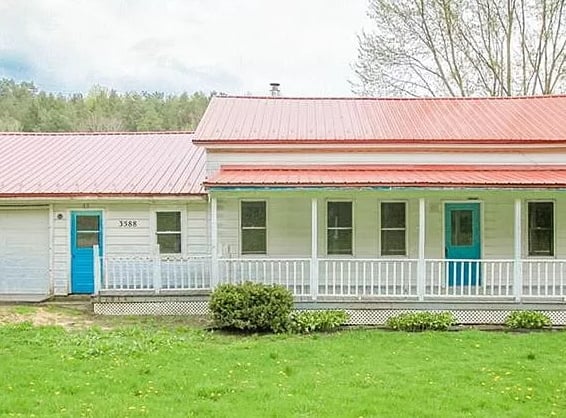
Second is this photo of the buggy in its shelter, in which you see what looks like the characteristic coloring of the New Wilmington Amish buggy (the buggy body shape also fits the mold). This photo was obviously taken at another time of year.


Finally, we come to the location, which is Falconer, New York. I am aware of a New Wilmington daughter settlement which is at Mayville. It’s been there since the 1970s and is two full church districts in size. The location of this home looks like it could belong to the Mayville community, especially since a community with 50-60 households could have a decent measure of sprawl, and depending on which side of the town the community lies.

However, I wasn’t sure, because it still seemed rather far from Mayville, so I checked further. And there is a community at Frewsburg, a town closer to this address. As it happens, Tom the Backroads Traveller has posted on the Frewsburg settlement, also two districts in size, being a daughter settlement of the Mayville community:
The Amish surrounding New Wilmington and those of the Belfast-Friendship community use distinctive reddish-brown-topped buggies, which are described as “yellow-top.” A new “yellow-top” community also was settled in 2011 to the west in Frewsburg, NY in Chautauqua County. This group grew out of the Dewittville-Mayville community which is located further to the west.
So if the Frewsburg settlement grew out of the Mayville settlement, which originated from the New Wilmington settlement, does that make Frewsburg a granddaughter settlement of New Wilmington? I don’t know if we have a common term to describe those “further generations” of Amish communities.

The home
The home itself was almost certainly English-built, as we can see by the design including the car garage. Here is the simple description of this 1,212-square-foot home via Zillow:
Currently an Amish home. This home has a lot to offer. Over 6 acres, a huge barn for anything you want. 2 car attached garage. Great location and school district. There is electricity to the property but the home would need re-wired.
The other thing about this home is that it was emptied out before the photos were taken. It’s more often the case that photos posted online show the homes fully furnished. But in this one you see empty rooms with just a smidge of the furnishings left behind (some kitchen cabinetry) and the interior window frames and doors painted a lighter shade of blue (aquamarine?) than the exterior doors.
The kitchen with cabinets.

Notice the hole where the stove pipe went.

Another angle showing the adjacent space.

Looks like the reverse angle, standing in the kitchen with your back to the cabinets.

The molding is a different shade of blue in this room, for some reason.

Upstairs space.

I’m not sure this rough space qualifies as a basement, but here’s what’s downstairs.

The garage.

So what’s the price of this home?

It was sold in April 2020 for $55,120.


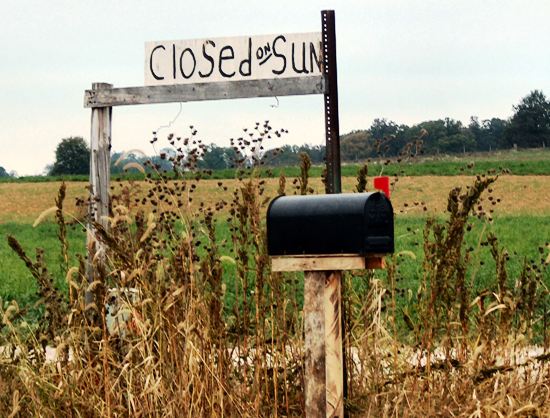
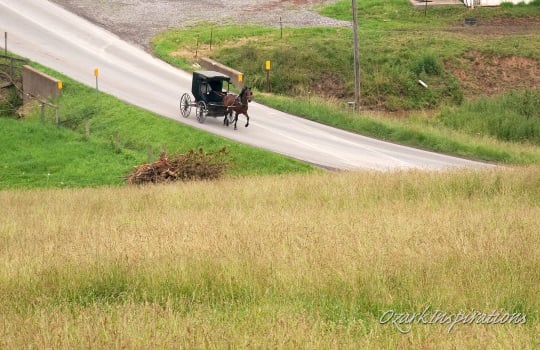



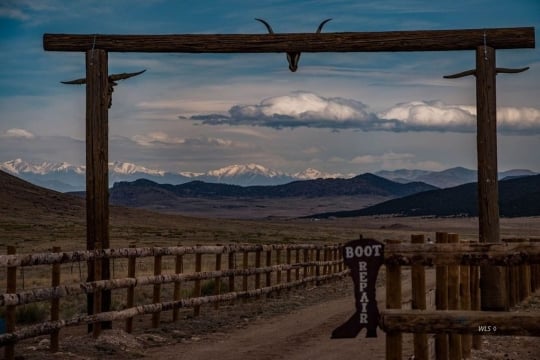
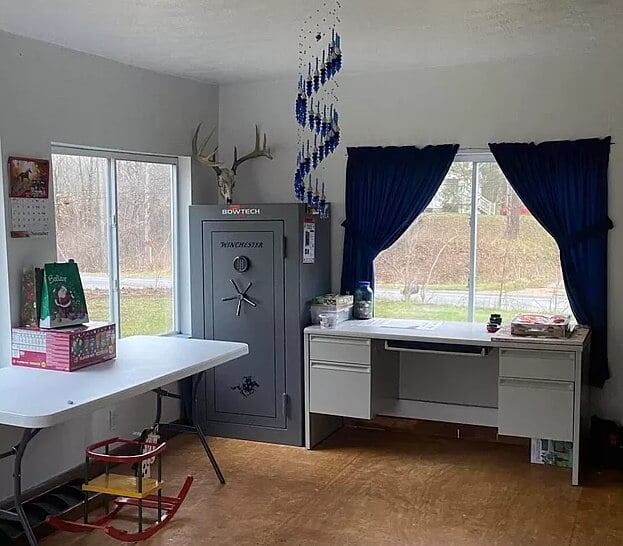

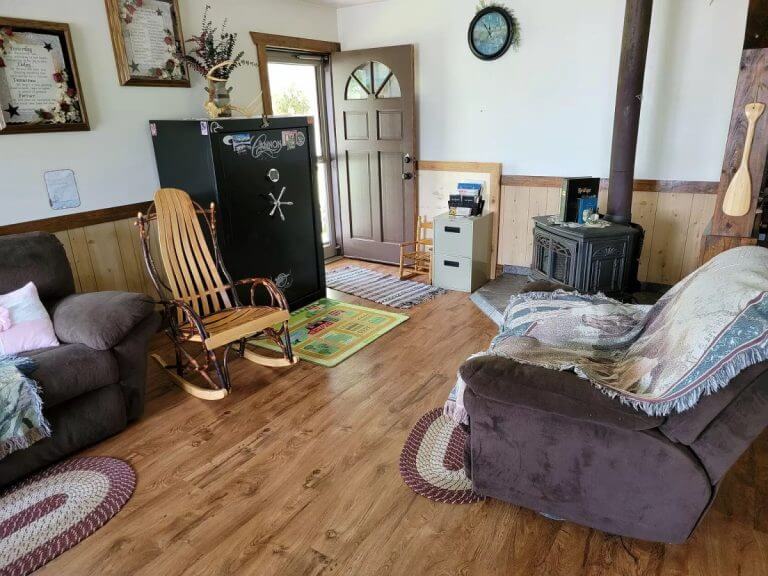
The meaning of blue
Erik,
Going back many years there was a long standing tradition in the larger Pennsylvania German community that when the eldest daughter of a household reached marrying age, the entry gate to the property was painted blue. I think of this every time I see these houses from this more traditional group. I’m doubting that their use of blue on the door and window ways has anything with marriage eligibility although one never really knows. The Society of True Inspiration also known as the Amana colonies had a similar practice in their communities as well as other places. I’d be very curious to know if the Hutterites practice this in any fashion.
Terry
Blue gates & the Amish
Well, the blue gate custom is actually a myth, though it’s a neat one. It can be found in a 1937 tourist pamphlet called The Amish of Lancaster County, which apparently wasn’t the first time it appeared. It’s also in another booklet that came out the next year by Ammon Aurand (sorry for the weird long URL): https://amishamerica.com/amish-tourism-early-tourism-depended-on-a-body-of-knowledge-that-was-at-times-dubious-as-well-as-upon-the-david-luthy-descri/
Brad Igou discusses the myth and its origination in an article here (page 22): https://issuu.com/amishcountrynews/docs/holiday16-winter17_digitalacn
Apparently there was once a well-known bishop on Route 30 in Lancaster County who had his gate painted blue because he liked the color. Another explanation is that he painted it blue because he felt it wouldn’t show dirt as much. He wasn’t the only one who did so, which may have helped propagate the myth. So it sounds like there were some examples of blue gates in the community at the time that the Lancaster County tourist industry was taking off, and creative people simply attached the “marriageable daughter” explanation to the picturesque gate that was visible on an Amish house in a commonly-trafficked road in the area.
It would be hard to find a blue gate at an Amish farm in the county today though maybe there are some. The blue doors are widely seen in some communities though including Big Valley in Pennsylvania.